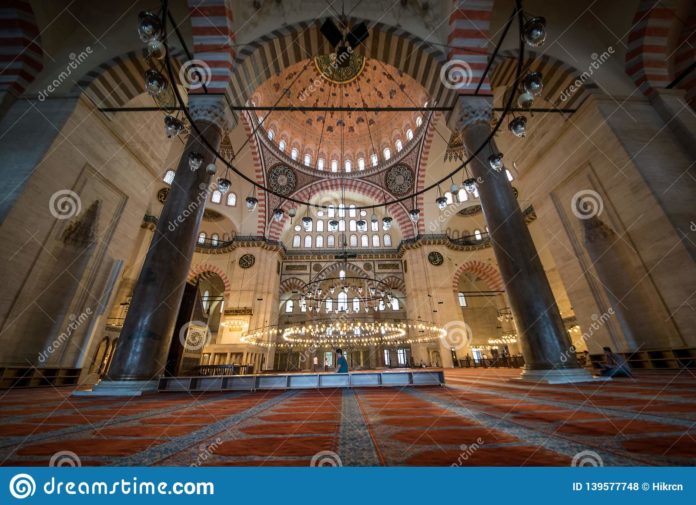Blue Mosque and Suleymaniye Mosque are both highly recommended by those who travel for a living. Overall, Blue Mosque scores marginally better than Suleymaniye Mosque. Blue Mosque has a TripExpert Score of 94 with recommendations from 7 sources like Afar Magazine, Time Out and Frommer’s.
What means Hagia Sophia? Hagia Sophia means “Holy Wisdom,” an Eastern Orthodox title for Jesus.
Then, Who built Sultan Ahmed Mosque? Mehmed Ağa, Ağa also spelled Āghā, (flourished 16th century and early 17th century, Turkey), an architect whose masterpiece is the Sultan Ahmed Cami (Blue Mosque) in Istanbul.
Who built masjid Sophia? Built by the eastern Roman emperor Justinian I as the Christian cathedral of Constantinople for the state church of the Roman Empire between 532 and 537, the church was then the world’s largest interior space and among the first to employ a fully pendentive dome.
FAQ
Is Byzantine Rome?
The Byzantine Empire was the eastern half of the Roman Empire, and it survived over a thousand years after the western half dissolved.
Who built Masjid Sophia? Built by the eastern Roman emperor Justinian I as the Christian cathedral of Constantinople for the state church of the Roman Empire between 532 and 537, the church was then the world’s largest interior space and among the first to employ a fully pendentive dome.
Why did the Ottomans convert the Hagia Sophia into a mosque? The main reason for Erdogan’s conversion of the Hagia Sofia was his desire to arouse Muslim passions for populist purposes in an Arab-Islamic world longing for a fresh awakening. This was another move in Turkey’s competition with Saudi Arabia for hegemony over the Sunni Muslim world.
Why is the Blue Mosque unique? The Blue Mosque has a unique place not just because of its 6 minarets but also because of its interior decorations and interior lighting. Due to the blue color that dominates the interior of the mosque, it is still known as the Blue Mosque today.
Why Sultan Ahmed Masjid is also known as Blue Masjid?
The Sultanahmet Mosque (Sultanahmet Camii) was built between 1609 and 1617 and is also known as the Blue Mosque because of the blue tiles used to decorate the walls of its interior. The construction was commissioned by Sultan Ahmet I.
What is Hagia Sophia famous for? It served as a center of religious, political, and artistic life for the Byzantine world and has provided us with many useful scholarly insights into the period. It was also an important site of Muslim worship after Sultan Mehmed II conquered Constantinople in 1453 and designated the structure a mosque.
What emperor built the church?
Constantine the Great played a major role in the development of the Christian Church in the 4th century. During his reign Constantine organized the very important Council of Nicaea and ordered bishops to build churches in several cities, but how was the network between him and the bishops organized?
What is Byzantine called today? Byzantium (/bɪˈzæntiəm, -ʃəm/) or Byzantion (Greek: Βυζάντιον) was an ancient Greek city in classical antiquity that became known as Constantinople in late antiquity and Istanbul today.
Where is Constantinople?
Contents. Constantinople is an ancient city in modern-day Turkey that’s now known as Istanbul. First settled in the seventh century B.C., Constantinople developed into a thriving port thanks to its prime geographic location between Europe and Asia and its natural harbor.
Is the Hagia Sophia still a mosque?
Built 1,500 years ago as an Orthodox Christian cathedral, Hagia Sophia was converted into a mosque after the Ottoman conquest in 1453. In 1934 it became a museum and is now a Unesco World Heritage site. Islamists in Turkey long called for it to be converted to a mosque but secular opposition members opposed the move.
Is Hagia Sophia a mosque or museum? Originally built as a Christian Orthodox church and serving that purpose for centuries, Hagia Sophia was transformed into a mosque by the Ottomans upon their conquest of Constantinople in 1453. In 1934, it was declared a museum by the secularist Turkish leader Mustafa Kemal Atatürk.
Can you still visit the Hagia Sophia? Visitors are still welcome to Hagia Sophia, which remains the country’s most popular tourist attraction.
Who was sultan after Ahmed 1?
Ahmed I died of typhus and gastric bleeding on 22 November 1617 at the Topkapı Palace, Istanbul. He was buried in Ahmed I Mausoleum, Sultan Ahmed Mosque. He was succeeded by his younger brother Şehzade Mustafa as Sultan Mustafa I.
What is the largest mosque in the world? List
| Name | Capacity | City |
|---|---|---|
| Masjid al-Haram | 4,000,000 | Mecca |
| Al-Masjid an-Nabawi | 1,500,000 | Medina |
| Grand Jamia Mosque, Karachi | 950,000 | Karachi, Sindh |
| Imam Reza Shrine | 700,000 | Mashhad |
Why do mosques have 4 minarets?
The number of minarets per mosque also varies, from one to as many as six. These towers were built to be “landmarks of Islam”—to be visible from afar and to stamp a site with Islamic character.
Is the Blue Mosque the biggest in the world? It’s the biggest mosque for us Muslims and it’s very near to. Legend hotel just 5 mints walk.
What happened Hagia Sophia?
All this changed drastically on July 24th, 2020, when the Erdogan regime converted the Hagia Sophia back into a mosque, restaging the 1453 conquest of Istanbul and the initial conversion of Hagia Sophia into a mosque.
Who was the first pope? Peter, traditionally considered the first pope.
Who created Catholicism?
| Catholic Church | |
|---|---|
| Founder | Jesus , according to sacred tradition |
| Origin | 1st century Holy Land, Roman Empire |
| Members | 1.345 billion (2019) |
| Clergy | Bishops: 5,364 Priests: 414,336 Deacons: 48,238 |























